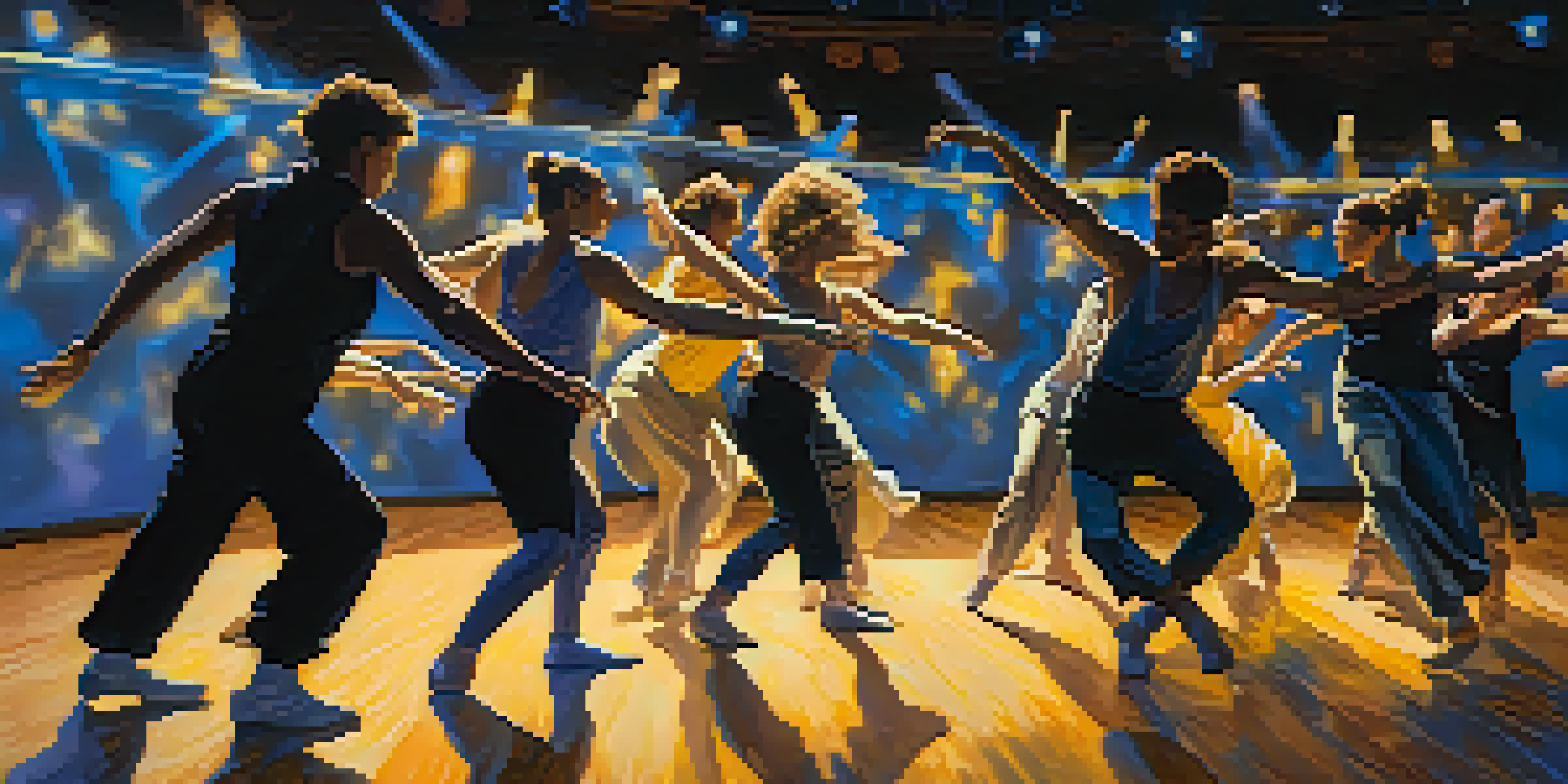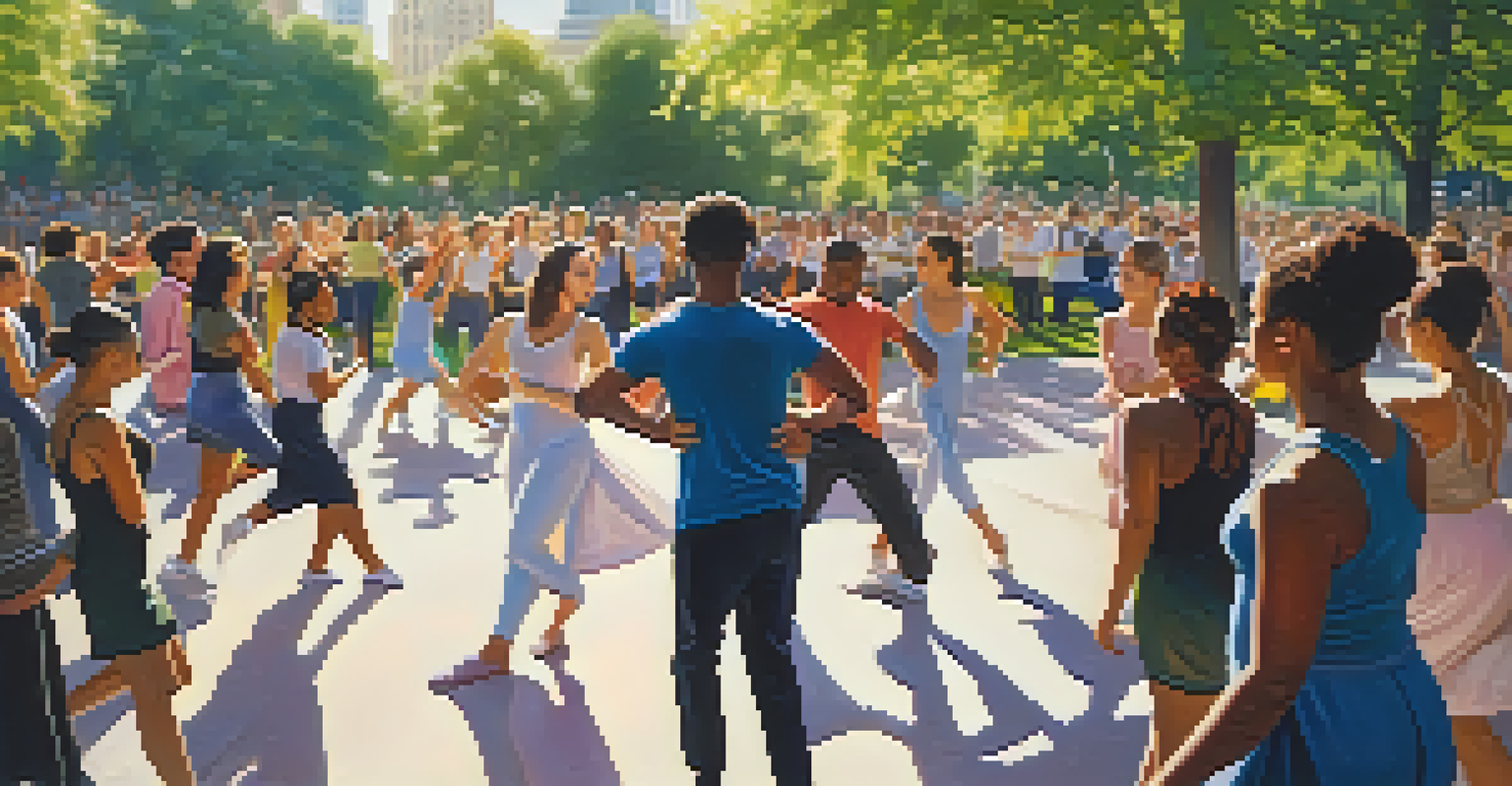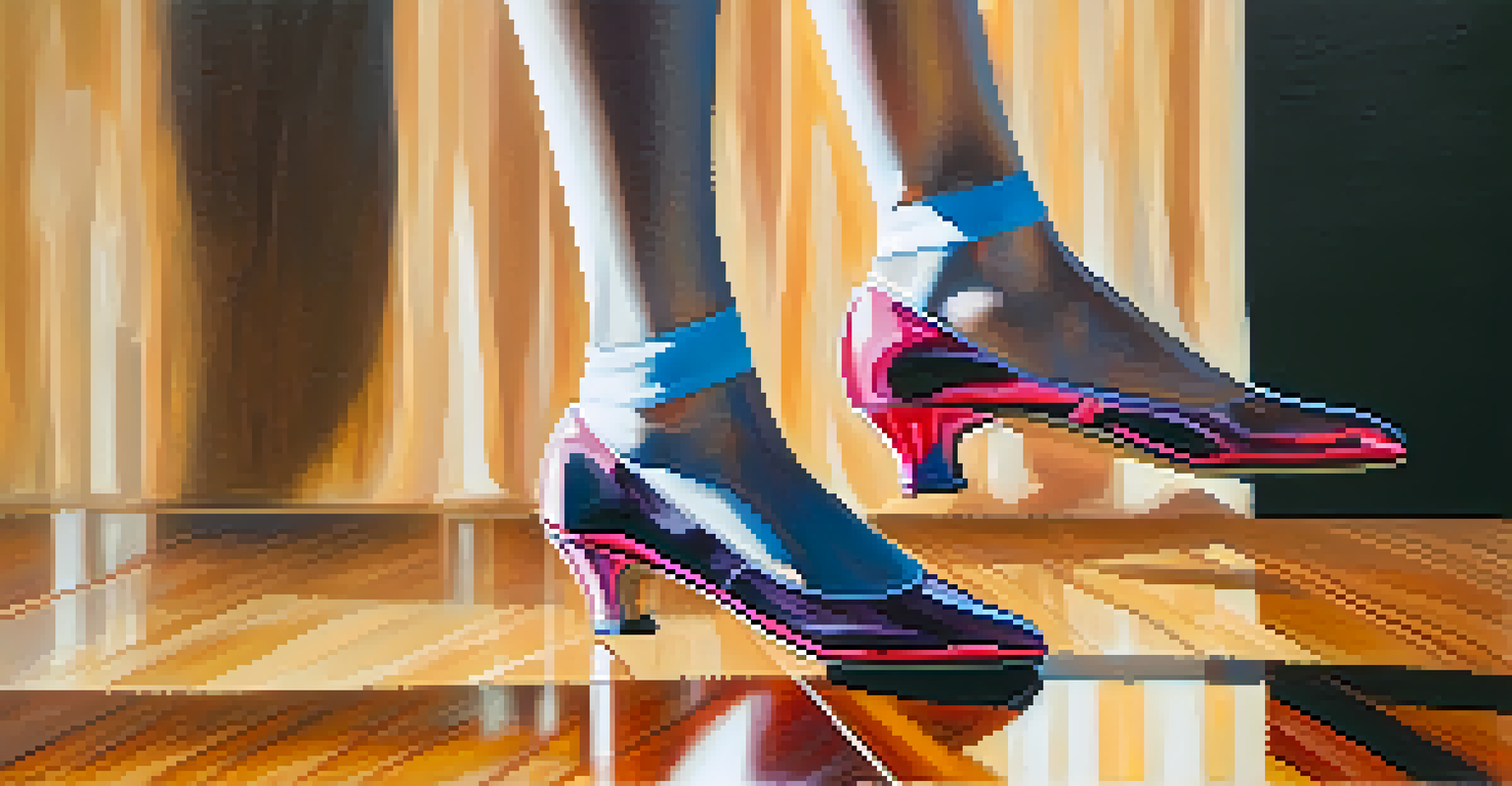Exploring Gender Identity Through Contemporary Dance Forms

The Intersection of Dance and Gender Identity
Contemporary dance serves as a powerful medium for expressing gender identity, allowing artists to explore and convey their experiences through movement. It breaks traditional boundaries, enabling dancers to embody various aspects of their identity, whether they align with male, female, or non-binary expressions. This fluidity mirrors the dynamic nature of gender itself, encouraging audiences to rethink preconceived notions.
Dance is the hidden language of the soul.
By embracing diverse forms of expression, contemporary dance invites a broader conversation about gender. Dancers often draw from personal narratives, turning their struggles and triumphs into visceral performances. This connection between personal experience and artistic expression fosters empathy and understanding, making the audience reflect on their own perspectives on gender identity.
For instance, performances that utilize both masculine and feminine movements challenge the audience to reconsider societal norms surrounding gender. This exploration not only enhances the dance itself but also enriches the conversation about identity in the wider cultural context.
Historical Context: Dance as a Reflection of Society
Understanding contemporary dance's role in expressing gender identity requires examining its historical roots. Traditionally, dance has been a reflection of societal norms, often reinforcing gender binaries. However, as society evolves, so does the art form, with contemporary dance stepping away from rigid categorization.

The feminist movement of the 1970s marked a significant turning point in dance, encouraging women to take center stage and express their stories. This shift paved the way for future generations to explore not just femininity but also masculinity, fluidity, and everything in between. As a result, contemporary dance has become a rich tapestry woven with diverse narratives.
Dance Reflects Gender Identity
Contemporary dance serves as a dynamic platform for artists to explore and express their gender identities, challenging traditional norms.
By integrating historical context, we can see how contemporary dance acts as both a mirror and a catalyst for change regarding gender identity. It challenges audiences to confront their beliefs and consider the implications of these evolving narratives within their own lives.
Choreographers Pushing Boundaries
Many contemporary choreographers are at the forefront of exploring gender identity through innovative dance practices. Artists like Kate Weare and Sean Dorsey are known for their work that questions traditional gender roles and celebrates diversity. Their choreography often incorporates elements from various dance styles, further emphasizing the fluidity of identity.
Art is the most beautiful of all lies; it is a way of expressing the truth of our lives.
These choreographers create spaces where dancers can express their unique experiences, allowing for a rich exchange of ideas and emotions. By centering marginalized voices, they challenge the mainstream narratives surrounding gender, contributing to a more inclusive artistic community. Their work not only entertains but also educates and inspires.
For example, Sean Dorsey’s performances often highlight transgender experiences, using movement to articulate the complexities of navigating identity. This blending of personal and artistic expression creates a powerful platform for dialogue about gender identity and acceptance.
The Role of Audience in Dance Performances
The audience plays a crucial role in the experience of contemporary dance, especially when it comes to themes of gender identity. Their reactions and interpretations can shape the narrative being presented on stage. This dynamic interaction creates a shared space for understanding and reflection, inviting viewers to question their own perceptions.
When audiences witness performances that explore diverse gender identities, they may find themselves challenged or enlightened. This engagement can lead to meaningful conversations outside the theater, fostering awareness and empathy in everyday life. The impact of contemporary dance extends beyond the performance itself, encouraging a broader societal dialogue.
Historic Shifts in Dance Narratives
The feminist movement and evolving societal views have transformed contemporary dance into a medium that celebrates diverse gender expressions.
Moreover, audience participation in discussions or post-show forums can further enrich this experience. By sharing personal insights and interpretations, attendees contribute to the evolving narrative of gender identity, highlighting the importance of community in this artistic exploration.
Dance as a Tool for Advocacy and Activism
Contemporary dance is not just an art form; it can also serve as a powerful tool for advocacy and activism regarding gender identity. Many artists use their platform to raise awareness about issues facing marginalized communities, such as discrimination and violence. Through their work, they are able to communicate urgent messages that resonate with audiences.
For example, dance performances addressing topics like gender-based violence can evoke strong emotional responses, prompting viewers to engage with the subject matter more deeply. This act of storytelling through movement can lead to greater understanding and inspire action within the community. The physicality of dance can convey feelings that words sometimes fail to capture.
By intertwining art and activism, contemporary dance cultivates a space for healing and empowerment. It encourages both performers and audiences to unite in the pursuit of social justice, creating a ripple effect that extends beyond the stage.
The Influence of Technology on Dance and Gender Identity
In our digital age, technology has become an integral part of contemporary dance, transforming how gender identity is explored and represented. Through video installations, social media, and virtual performances, artists can reach broader audiences and share their messages more effectively. This accessibility allows for diverse voices to be heard and celebrated.
Social media platforms, in particular, provide a space for dancers to express their identities openly and connect with like-minded individuals. This sense of community can be empowering, fostering a supportive environment for those navigating their own gender journeys. The interplay between technology and dance creates an exciting opportunity for collaboration and innovation.
Audience Engagement Shapes Understanding
The interaction between performers and audiences in contemporary dance fosters deeper conversations about gender identity and societal norms.
Moreover, technology allows for the exploration of new forms of storytelling, blending traditional dance with multimedia elements. This fusion can enhance the representation of gender identity, making performances even more impactful and resonant with audiences.
Future Directions in Dance and Gender Identity
As we look to the future, the conversation surrounding gender identity in contemporary dance continues to evolve. Emerging artists are increasingly challenging traditional norms and pushing the boundaries of expression. This new generation is committed to creating inclusive spaces where all identities can be celebrated.
The ongoing dialogue about gender fluidity and non-binary identities is set to influence future choreographic works. As society becomes more accepting of diverse identities, we can expect to see even more innovative performances that reflect these changes. This evolution in dance not only enriches the art form but also contributes to social progress.

Ultimately, the future of contemporary dance holds immense potential for further exploration of gender identity. By embracing diversity and fostering open dialogue, the dance community can continue to inspire audiences and promote understanding in an ever-changing world.